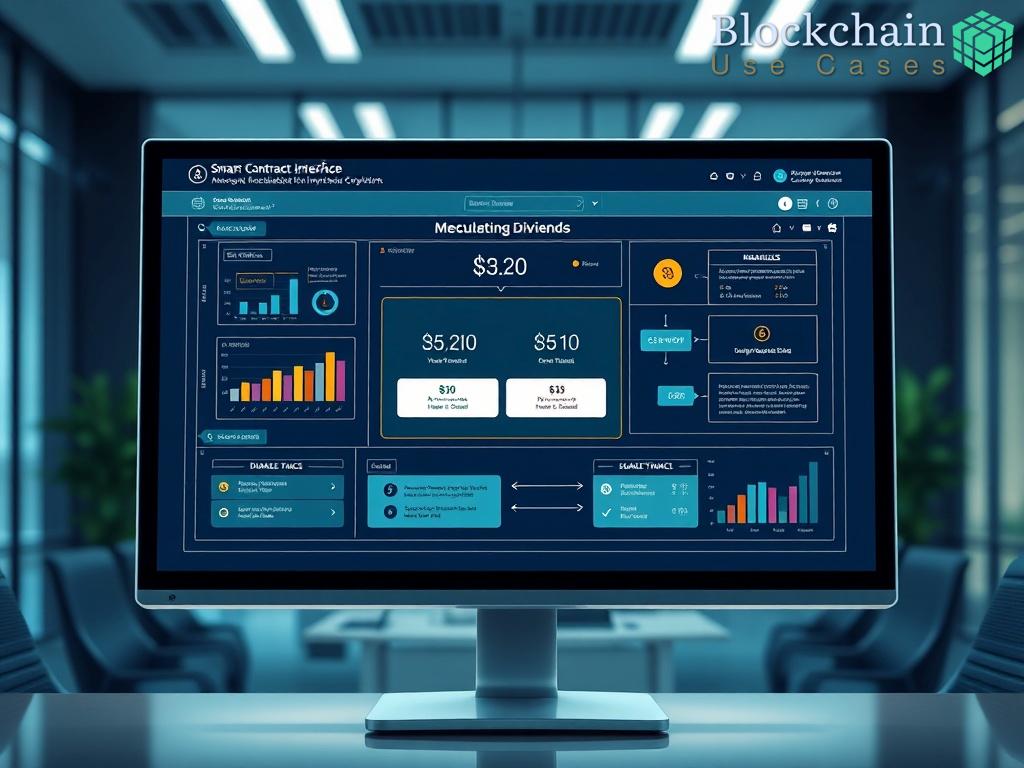The Role of Blockchain in Insurance Regulatory Sandboxes

Transforming Insurance through Transparency
The advent of blockchain technology has revolutionized various industries, and the insurance sector is no exception. As regulatory bodies explore the concept of insurance regulatory sandboxes, blockchain emerges as a promising solution to enhance transparency, efficiency, and trust. These sandboxes provide a controlled environment for insurance innovators to test their products and services while ensuring compliance with regulations. By integrating blockchain into these frameworks, stakeholders can facilitate better cooperation and improve the overall regulatory process.
Enhancing Data Integrity and Security
Data integrity and security are paramount in the insurance industry, where sensitive information is often at risk. Blockchain’s decentralized nature offers a robust solution to these concerns. Each transaction on a blockchain is recorded in a tamper-proof ledger, ensuring that data remains secure and unaltered. This aspect not only protects customer information but also enhances the credibility of insurance products in a regulatory sandbox environment.
Furthermore, the implementation of smart contracts can automate various processes, reducing the need for manual intervention and minimizing the risk of errors. This automation fosters a more efficient testing phase within sandboxes, allowing regulators and innovators to focus on improving the customer experience.
Facilitating Collaborative Innovation
One of the most significant advantages of integrating blockchain into insurance regulatory sandboxes is the potential for collaborative innovation. Blockchain allows multiple stakeholders, including insurers, regulators, and technology providers, to access the same data in real-time. This shared visibility fosters an environment of collaboration, where participants can work together to develop solutions that benefit the entire ecosystem.
Below is a list summarizing the key benefits of utilizing blockchain in insurance regulatory sandboxes:
- Transparency: All participants can verify transactions, enhancing trust.
- Efficiency: Automated processes through smart contracts reduce operational delays.
- Security: A decentralized ledger safeguards sensitive data from breaches.
- Collaboration: Real-time data access encourages innovative partnerships.
In conclusion, the role of blockchain in insurance regulatory sandboxes is pivotal. It not only streamlines processes but also paves the way for a more transparent and secure insurance landscape. As these sandboxes continue to evolve, the integration of blockchain technology will be instrumental in shaping the future of insurance regulation.
Benefits of Decentralized Platforms for Insurers and Regulators
The emergence of decentralized platforms in the realm of insurance regulatory sandboxes heralds a transformative shift for both insurers and regulators. By leveraging the inherent strengths of decentralized technology, stakeholders can unlock new possibilities for collaboration and efficiency, ultimately benefiting the entire insurance ecosystem.
Empowering Insurers with Greater Flexibility
The decentralized framework empowers insurers to operate with enhanced flexibility, allowing them to innovate and adapt to market demands rapidly. Traditional regulatory processes can be cumbersome, often stifling creativity and slowing down the introduction of new products. However, decentralized platforms facilitate a more agile environment where insurers can conduct experiments and pilot programs without the prolonged approval cycles typical of conventional regulatory frameworks. This agility fosters a culture of continuous improvement and responsiveness to customer needs.
Streamlining Regulatory Oversight
For regulators, the adoption of decentralized platforms streamlines oversight while maintaining robust compliance mechanisms. By utilizing smart contracts, regulators can automatically enforce compliance rules within the sandbox environment. These contracts execute actions based on predefined conditions, reducing the burden on human resources and minimizing the risk of oversight errors. Moreover, the transparent nature of decentralized platforms enables regulators to access real-time data, facilitating informed decision-making and proactive risk management.
Enhancing Trust through Transparency
Trust is a cornerstone of the insurance industry, and decentralized platforms significantly enhance this trust factor. By providing a transparent and immutable ledger, all parties involved have access to verified information regarding transactions and activities within the sandbox. This transparency mitigates concerns about fraud and misconduct, fostering a secure environment for innovation. Insurers can confidently engage in collaborative efforts, knowing that their data and interactions are safeguarded against manipulation.
| Feature | Insurers | Regulators |
|---|---|---|
| Flexibility | Rapid innovation cycles and product testing | Streamlined approval processes and oversight |
| Compliance | Automated smart contract enforcement | Real-time data access for informed decisions |
| Trust | Increased confidence in transactions | Reduced risk of fraud and misconduct |
In summary, the integration of decentralized platforms into insurance regulatory sandboxes not only catalyzes innovation but also reinforces the pillars of trust and compliance. As both insurers and regulators harness these benefits, the future of insurance regulation looks promising, paving the way for a more dynamic and resilient insurance landscape.
Challenges and Risks of Implementing Decentralized Insurance Solutions
While the advantages of decentralized platforms in insurance regulatory sandboxes are compelling, the transition to such systems is fraught with challenges and risks that stakeholders must navigate carefully. As insurers and regulators explore these innovative frameworks, it is essential to address the potential pitfalls that could undermine their effectiveness and the trust of participants.
Technological Barriers to Adoption
One of the most significant hurdles in implementing decentralized insurance solutions is the technological barrier. Many insurers lack the necessary infrastructure and expertise to transition to decentralized platforms. Additionally, the integration of blockchain technology and smart contracts demands a high level of technical knowledge, which may not be readily available within traditional insurance firms. This skill gap can lead to delays in the deployment of decentralized solutions and hinder the overall progress of innovation in the insurance sector.
Regulatory Uncertainty and Compliance Challenges
The evolving nature of blockchain and decentralized systems poses unique regulatory challenges. As regulatory bodies strive to keep pace with technological advancements, uncertainties regarding compliance may arise. Insurers operating in decentralized environments may face difficulties in meeting existing regulatory requirements while experimenting with new models. Furthermore, the lack of established regulatory frameworks for decentralized platforms can create ambiguity, potentially leading to compliance risks that could jeopardize the legitimacy of insurance products.
Mitigating Risks: Key Considerations for Stakeholders
In light of these challenges, stakeholders must approach the implementation of decentralized insurance solutions with a strategic mindset. Below is a list of key considerations that can help mitigate risks:
- Invest in Education: Insurers should prioritize training and education for their teams to build the necessary skills for decentralized platform adoption.
- Collaborate with Regulators: Engaging in proactive dialogue with regulatory bodies can help clarify compliance requirements and ensure alignment with regulatory expectations.
- Implement Robust Security Measures: Given the sensitivity of data in the insurance industry, stakeholders must invest in advanced security protocols to protect against potential breaches.
- Foster a Culture of Innovation: Encouraging a mindset that embraces change and experimentation can facilitate smoother transitions to decentralized systems.
By addressing these challenges head-on, insurers and regulators can harness the full potential of decentralized platforms, paving the way for a more innovative, transparent, and resilient insurance landscape.
Case Studies: Successful Decentralized Insurance Initiatives
The integration of decentralized platforms within insurance regulatory sandboxes has paved the way for innovative solutions that challenge the traditional paradigms of the insurance industry. Several initiatives around the globe have successfully harnessed this technology, showcasing the potential of decentralization to enhance operational efficiency, trust, and compliance. These case studies not only highlight the viability of decentralized platforms but also serve as a roadmap for future implementations in the insurance sector.
Transforming Claims Processing with Insurwave
One of the most notable examples of decentralized insurance innovation is Insurwave, a project developed in collaboration with major industry players like Aon and Guardtime. Insurwave leverages blockchain technology to streamline the marine insurance sector by automating the claims process. Traditionally, claims in this industry can be mired in paperwork and lengthy verification processes. However, by utilizing smart contracts on a decentralized platform, Insurwave allows for real-time data sharing and automatic claims payouts based on predefined conditions. This approach not only reduces administrative overhead but also enhances trust among stakeholders, as all parties have access to a single source of truth.
Enhancing Customer Experience with Etherisc
Etherisc represents another pioneering endeavor in decentralized insurance, focusing on creating a platform that empowers users to design and purchase insurance products tailored to their needs. Etherisc utilizes a decentralized framework to ensure that customers can access insurance solutions without intermediaries, significantly lowering costs. Their pilot project, which provides crop insurance for farmers in emerging markets, exemplifies how decentralized platforms can democratize access to essential services. By employing blockchain’s transparent ledger, Etherisc enables farmers to receive timely compensation when adverse weather events occur, thereby fostering resilience in agricultural communities.
These initiatives illustrate the transformative power of decentralized platforms in the insurance sector. They not only demonstrate how technology can enhance operational efficiencies but also highlight the importance of trust and collaboration among stakeholders. The success of Insurwave and Etherisc serves as compelling evidence that decentralized solutions can address the evolving challenges faced by the insurance industry.
As decentralized insurance models continue to gain traction, it becomes increasingly clear that they hold the potential to reshape the future of insurance regulation. Stakeholders must take note of these successful implementations to inform their own strategies and drive innovation within their organizations. The journey toward a decentralized insurance landscape is not without its challenges, but the rewards are likely to be significant for those who embrace this paradigm shift.
Future Trends in Decentralized Insurance Regulation
The landscape of insurance regulation is on the brink of a significant transformation, driven by the rapid evolution of decentralized platforms. As we look towards the future, several trends are emerging that will shape the way insurers and regulators interact within these innovative frameworks. This evolution promises greater autonomy, enhanced collaboration, and a redefined approach to risk management.
Decentralization as a Standard Practice
The shift towards decentralized insurance solutions is not merely a passing trend but is poised to become a standard practice. As more regulatory bodies recognize the benefits of operating within decentralized frameworks, we can anticipate an expansion of regulatory sandboxes specifically designed for blockchain-based insurance models. This shift will enable insurers to conduct trials and implement new products in a controlled yet flexible environment. The proliferation of these sandboxes will likely lead to a greater understanding of decentralized technologies among regulators, thus fostering a more conducive atmosphere for innovation.
Integration of Advanced Technologies
In the coming years, the integration of advanced technologies such as artificial intelligence (AI) and machine learning (ML) with decentralized platforms will catalyze a new era in insurance regulation. These technologies will enhance data analytics capabilities, allowing insurers to derive actionable insights from vast datasets. When combined with blockchain’s transparency and security features, AI and ML can facilitate more accurate risk assessments and personalized insurance products. Moreover, this integration will streamline compliance processes, enabling real-time monitoring and reporting, which is crucial for maintaining regulatory standards within decentralized environments.
The Emergence of Consumer-Centric Models
Future trends will see a notable emphasis on consumer-centric models within decentralized insurance regulation. As stakeholders become more attuned to the needs of policyholders, there is a growing expectation for transparency and control over personal data. Decentralized platforms empower consumers by allowing them to manage their insurance policies and claims directly, without relying on intermediaries. This shift will not only enhance customer experience but also foster trust between consumers and insurers, as clients will have greater visibility into the mechanisms of their insurance products. By prioritizing consumer needs, the insurance industry can build a more resilient and responsive regulatory framework.


















